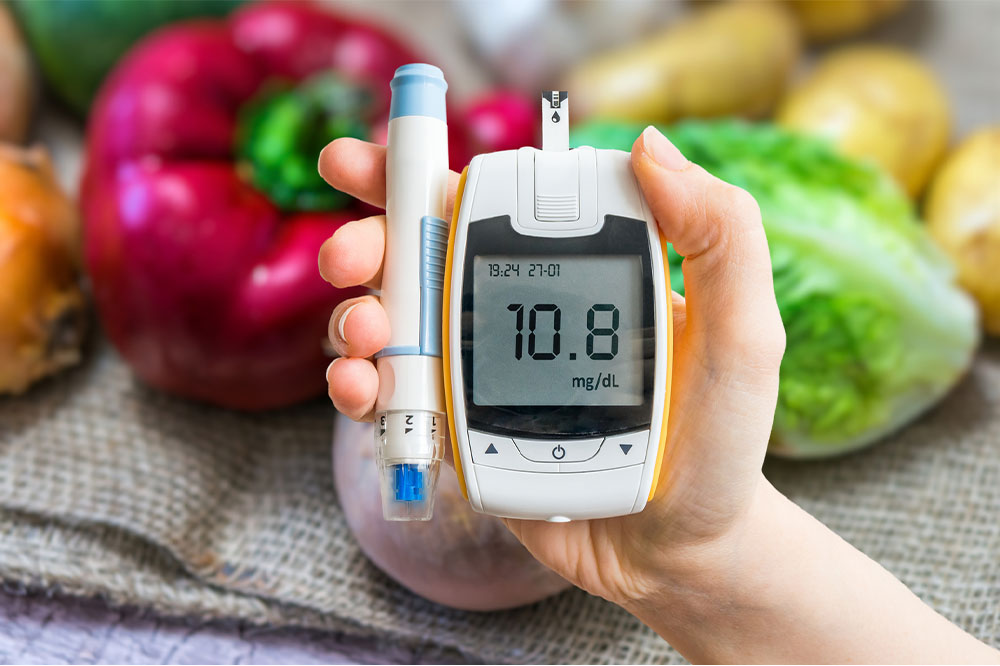
Diabetes – Understanding the symptoms and diagnostic options
Diabetes is a chronic condition that has no definitive cure. It can develop during early childhood and adulthood. The condition can be managed to improve the quality of lifestyle in the long run. It is even possible to bring back blood sugar levels to normal in some cases. Knowing the early warning signs and how the condition is diagnosed allows people to treat diabetes at its earliest stages. Read on to know more.
Symptoms
The symptoms of type 1, type 2, or gestational diabetes may vary. Following are the symptoms experienced by patients.
- Frequent urination
There is an increased need and urgency to urinate as the condition progresses. - Unexplained weight loss
Changes in body weight could be a clear indicator of abnormal metabolic activity that is triggered due to an imbalance in blood sugar levels. - Increased thirst and appetite
Having an urge to binge eat or drink at frequent intervals could indicate a problem with rising blood glucose. Increased thirst is a common symptom of prediabetes. - Vision is affected
Some people start experiencing blurry vision even if they don’t have to wear corrective lenses for eyesight. Diabetes, if left unchecked, can also severely affect eyesight leading to diabetic retinopathy. - Tingling sensations in hands and feet
People also experience a tingling sensation in their hands or feet from time to time. Some patients complain about numbness in the extremities that can affect day-to-day activities as well. - Difficulty healing
An imbalance in blood sugar levels also affects the body’s healing ability. As a result, wounds, open cuts, and sores may take longer to repair and rebuild new tissue. The risk of an infection is also high. The body’s immunity is also affected since it has to work overtime to process the excess sugars in the bloodstream. - Nausea, vomiting, and stomach pain
These are symptoms that are more predominant in people with type 1 diabetes. The severity of the symptoms will vary depending on when the condition is diagnosed. But the risk is equally high among small children, grown adults, and even seniors.
Note that type 2 is more difficult to detect as the symptoms often develop late and in a very erratic manner. Also, gestational diabetes is a risk factor only among pregnant women. The symptoms may not develop at all, but it is advisable to get tested between the 24th and 28th weeks of pregnancy.
Diagnosis
A blood test is a quickest and most efficient way of confirming high blood glucose levels in the body. If the results cross a certain threshold limit, the doctor will do further screening to determine if it is type 1, type 2, or gestational diabetes.
- A1C test
The A1C test is suggested during the early stages to assess the glucose content in the blood. A normal reading is no more than a 5.7% threshold limit, whereas prediabetes is confirmed between 5.7% to 6.4%. Any reading greater than 6.5% confirms diabetes. - Fasting blood glucose
Taking a reading after fasting for 8 hours, usually done the next day before breakfast, gives a more accurate assessment of the blood glucose levels. A person who has a reading of equal to or greater than 126mg/dl is considered diabetic. - Measuring glucose tolerance
An oral glucose tolerance test is done among patients suspected of the condition to understand how the body processes excess sugars in the bloodstream. At predetermined intervals, doctors ask people taking the test to consume a sugary liquid and measure the glucose increase in the bloodstream. If the reading is higher than 200mg/dl, it is conclusive proof of diabetes. This is a shorter format for testing the condition. - Random sugar testing
This test can be easily done at home using a blood glucose kit during the day. If the random blood glucose reading shows above 200mg/dl, immediate medical attention is advisable. Note that random sugar testing can be done after the diagnosis is confirmed. The test helps to keep blood sugar levels in check.
Most people who might get diagnosed with type 2 are already prediabetic. This means the blood glucose levels are not yet high enough to be concerned. For some people, early treatment can also bring down blood sugar levels back to normal within a short period of time. But the risk of the condition will always be there if symptoms persist.
Is it possible to prevent diabetes?
Simple changes in daily food habits combined with an active exercise regime can help lower the risk of type 2 diabetes. Managing carbohydrate intake, regular exercise, staying hydrated, losing excess weight, keeping track of portion sizes, and even resting well are excellent preventive measures in the long run. Doctors also recommend quitting smoking and drinking to lower the risk of associated health disorders.




